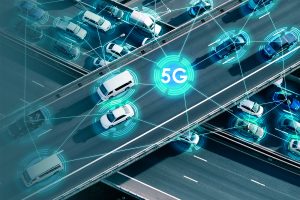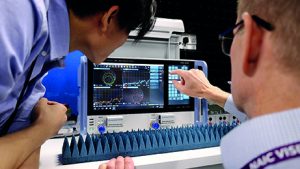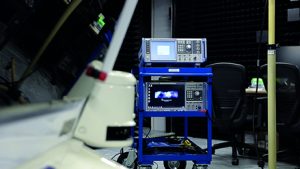
5G connectivity will revolutionize the way cars are designed, manufactured, and used. Important characteristics include low latency, real-time determinism, the ability to process large amounts of data, and efficient use of network capacity. These enable automakers and their partners to develop new capabilities, offer and monetize new services, and transform the driver and passenger experience.
5G will enable the capture of vast amounts of telematics data from large numbers of connected cars, enabling the emergence of new, richer services. 5G connectivity allows some computing workloads to be transferred to the cloud, minimizing the cost of hardware installed in the vehicle.
Additionally, by providing real-time deterministic communications, 5G can enhance the effectiveness of in-vehicle sensors by leveraging additional information from infrastructure sensors, other vehicles, and data from service providers to improve advanced driving capabilities. It offers the potential for assistance systems to become smarter. The transition to autonomous driving will also become easier.
5G will enable the era of software-defined cars that meet market and environmental requirements and can be updated throughout their lifetime to satisfy the next owner, increasing the sustainability and longevity of the vehicle.
Drivers and passengers can expect to be able to access the full range of 5G services from inside the vehicle at any time.
Research at WMG
For connected cars to become an integral part of the 5G environment, automakers in particular need to know how design decisions such as antenna placement inside the car affect transmission and reception. They need to know not only the effects of the materials selected for various items in the vehicle body, but also the effects of other components such as windows, seats and crash structures that can block or attenuate the signal.

Figure 1: Channel sounding experiments analyze effects such as excessive path loss and delay spread.
WMG (Warwick Manufacturing Group) is a division of the University of Warwick with a long history of automotive research and development. Experts from the company’s communications and connectivity group are researching his 5G applications for connected cars. Its mission is to gain the knowledge necessary to enable the UK automotive industry to enable vehicles and networks to coexist and cooperate in a 5G world, ensuring subscribers benefit from reliable 5G services. It is to do so.
The WMG Communications and Connectivity Group has a number of research programs underway and in 2019 installed Europe’s first wireless 5G test equipment for use in connected and autonomous vehicles at the Midland Future Mobility Testbed.
How 5G works around cars
The group has established a channel sounding facility to analyze the behavior of 5G signals in and around vehicles. A pair of transceivers, including an in-vehicle set, is set up to emulate equipment expected to be installed in next-generation connected cars and measure signal strength at various locations.
The channel sounding equipment operates in the 5G New Radio Frequency Range 1 (FR1) up to 6 GHz and FR2, which includes all frequencies above 6 GHz. For signal generation and analysis, the team uses test and measurement equipment from Rohde & Schwarz UK. This includes his SMW200A vector signal generator, FSW85 signal and spectrum analyzer, and RTO2044 digital oscilloscope, acquired through the Rohde & Schwarz University Support Program. The SMW200A allows teams to transmit band-limited signals at carrier frequencies up to 40 GHz and arbitrary modulated waveforms at clock frequencies up to 2.4 GHz. FSW85 and RTO2044 can process received signals at sampling rates up to 2.4GHz.
“Automotive applications operate in a variety of FR1 and FR2 bands, all the way to the very high mmWave frequencies. “We needed multi-GHz capabilities…in and around the vehicle across the entire radio spectrum. to properly understand the wireless environment,” explains Dr. Matthew Higgins, 5G Communications reader and WMG research group leader. “Not only does this instrument have a wide frequency range, but it also delivers excellent low-noise performance and is highly accurate and reproducible. You will be able to rely on measurements as a reference.”

Figure 2: Understanding the wireless environment in and around the vehicle required multi-GHz capabilities
Channel sounding experiments using this equipment are useful for analyzing effects such as excessive path loss and delay spread that affect quality of service parameters such as error vector magnitude and data throughput that determine the end user experience. The results will be used to design 5G-enabled vehicles.
“We have already gained many insights that will help us optimize the placement of 5G antennas in connected cars. areas should be avoided,” says Higgins.
“Also, from a style point of view, ensuring the best performance is clearly important, but the antenna should be unobtrusive. To achieve this objective, it should enable reliable and high-speed connections. We analyzed radio-transparent materials that can hide the antenna from view.
“Tomorrow’s connected cars will have to meet high expectations, and the knowledge we are gaining now should give the industry the best chance of meeting them,” he added.


